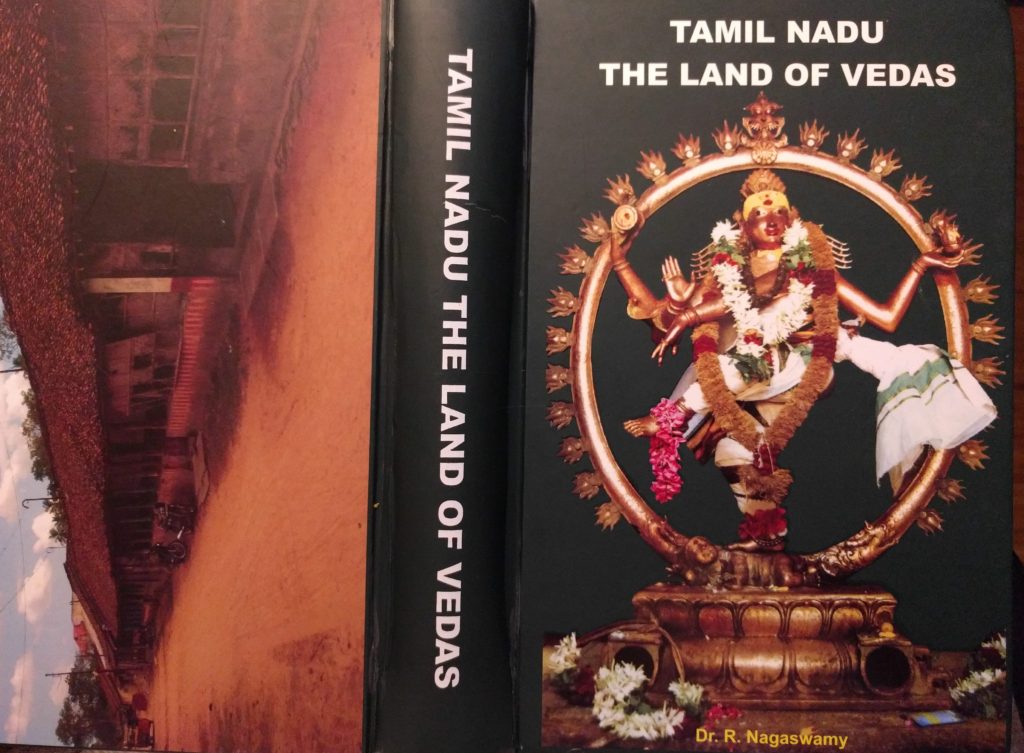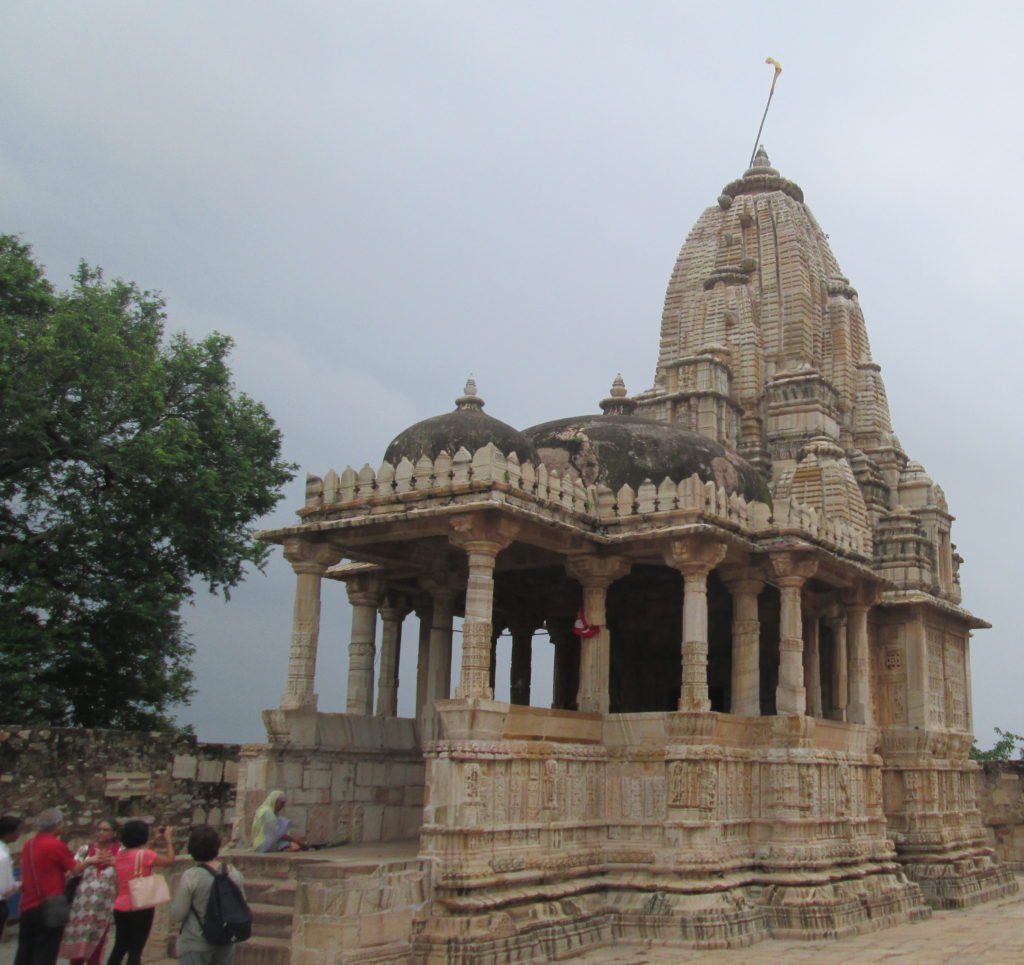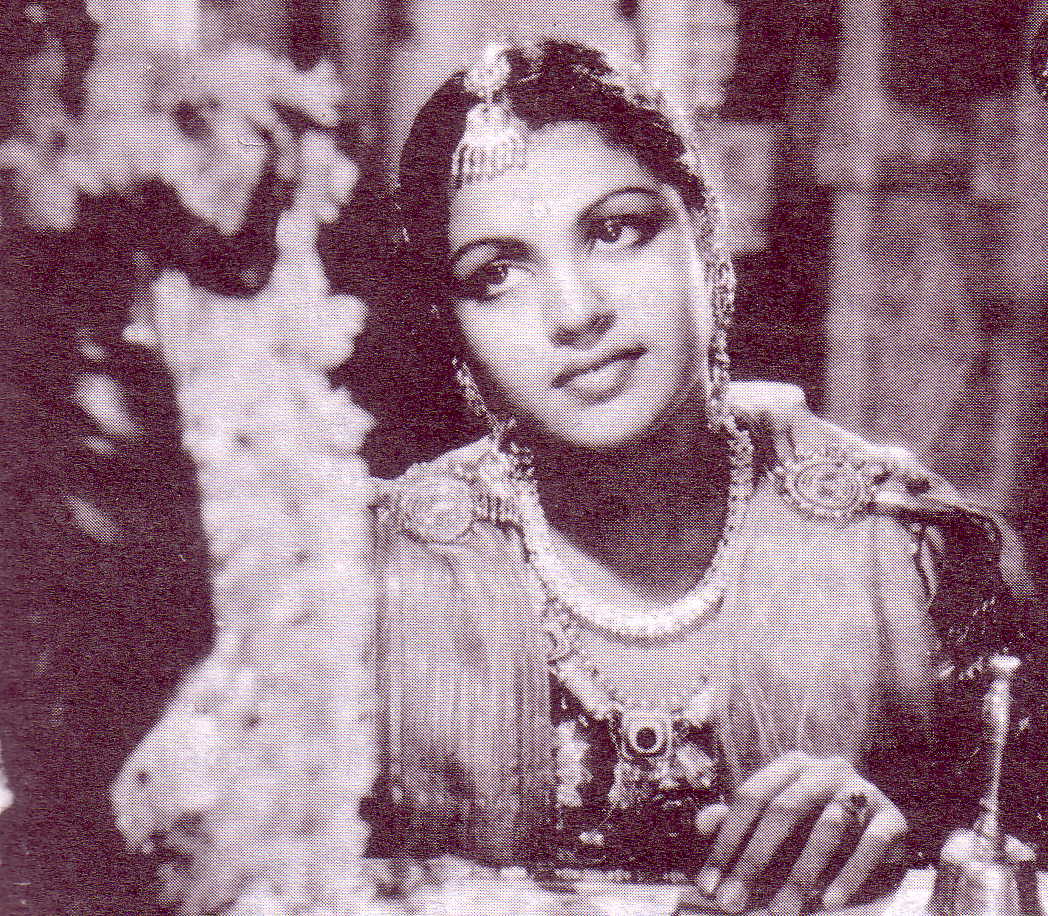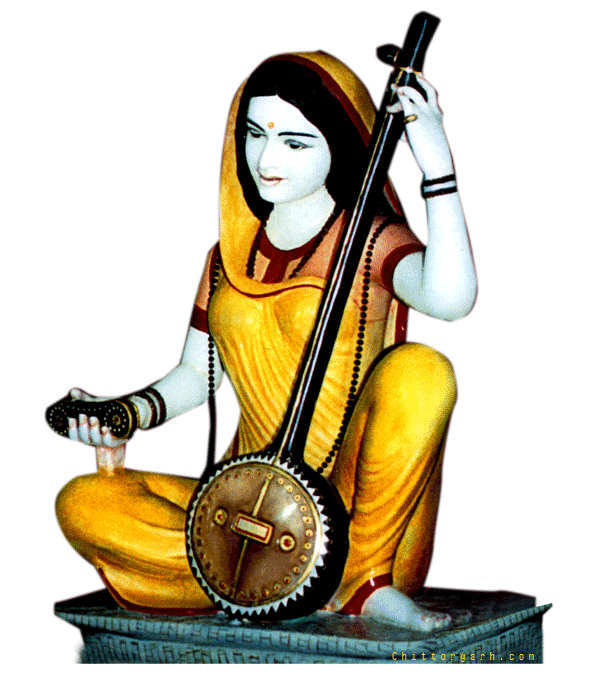
The Sangam Era
‘Tamil Nadu: The Land of Vedas‘ is Dr. Nagaswamy‘s latest publication in a long series of scholarly works studying the history and culture of Tamil Nadu. Nagaswamy’s several decades of contributions in this area have lead to a better understanding and awareness among the people of Tamizh kalacharam in particular, and Indian Sanskriti as a whole. Through this book, Nagaswamy demolishes several ill-formed and spurious assumptions and claims regarding Tamizh culture, history, and language that have been postulated in the last century. Leading Hindu and Indian-American intellectual Rajiv Malhotra, in this video below, shares his thoughts regarding the importance of this work.
New TV serial on Aryan/Dravidian conflict expected soon on Star Plus. Goldie Behl producer-director. I plead them to pause the project & consult scholars rather than politicize irresponsibly based on myth-makers & breaking India forces. This could be serious so please get involved in a responsible manner. Rajiv Malhotra
Posted by Rajiv Malhotra on Saturday, August 20, 2016
TCP painstakingly curated the content of Dr. Nagaswamy’s important talks demonstrating the fundamental dharmic links between Tolkappiyam, Silapathikaram, and Natya Shastra as part of a two-part series that demonstrated an integral unity between Tamizh and Sanskrit traditions. In the process of understanding the nature of this unity, it becomes evident that the culture of Tamizhs, while distinct, is not separate from other regional cultures in India since ancient times. Many of Nagaswamy’s prior works, including his lectures, are focused on this remarkable consonance between Tamizh and Sanskrit. In this new book, his research, expertise and wisdom come together to bring to the reader a fascinating and factual description of the Vedic culture of the Tamizh land. In doing so, his work reaffirms the philosophical unity of Bharatvarsha. This book is a fact-driven work representing several decades of research by Dr. Nagaswamy in four different areas:
- Literature
- Epigraphy and Inscriptions
- Ancient Structures and Monuments
- Darshana / Philosophy
The magnificient ancient temples of Tamil Nadu, with their proud Gopurams, majestically proclaim to the world that the land on which they stand is the land of dharma and Vedas. There is also a massive amount of historical and literary data directly attesting to the dharmic and Vedic basis of Tamizh society since ancient times. For example, Nagaswamy notes that the organization of Tolkappiyam, the first Tamizh grammar work, and its rules, is reflected in Vedic Pratisakyas and Paanini’s grammar, as shown by P. Subramanya Sastri. Furthermore, the marriage of Kannagi, the main character of Silapathikaram was conducted as per Vedic rites. Ancient Tamizh kings invited and rewarded thousands of meritorious brahmanas by providing them residences and land grants. It is worth noting that the necessary and stringent qualifications imposed by the Kings here. Rewards were not simply bestowed on the basis of birth, but required the individual to exhibit good conduct, maintain their vow of poverty, be a living embodiment of the Vedas, and demonstrate their adherence to dharma.
Silappadikaram speaks everywhere about Brahmins' chanting of Vedas and conduct of Yajnas, in glowing terms.#Periyava pic.twitter.com/maMjrUZXeF
— Sage of Kanchi (@haraharasankara) September 28, 2016
This first post briefly summarizes some key comments and insights provided by Nagaswamy in the chapter on Sangam literature.

Purananooru (Puram Anthology)
- First two songs
This collection of poems has been recognized as the most authentic record of ancient Sangam literature without any latter additions. Nagaswamy points out to us the rich Vedic tradition and dharmic concepts present in this anthology which seamlessly spans the material and sacred domain. The first prayer song is attributed to Perumdevanaar who sang the Mahabharata in Tamizh, and the second to Mudinaagaraayar, the earliest known Tamizh poet in history. This latter fact is known to us thanks to Tamizh Thatha (grandfather) U. V. Swaminatha Iyer’s work with palm leaf manuscripts. Legends like UV Swaminatha Iyer and Dharampal, through their decades of tireless seva, are true Bharat Ratnas. Mudinaagaraayar praises a Chera king in this song as a participant of the Kurushetra battle between the Kauravas and Pandavas. Nagaswamy’s commentary is extremely powerful and important, clearly bringing out the integral unity of India. He notes that even if this is were a case of poetic exaggeration, “it still makes clear, that this Tamil king did feel he was a part of this country and did not stand in isolation. The reference to Mahabharata war the king’s participation would show that the epic was a part of Tamil ethos at the very beginning of Tamil history, is an identity but not isolation. The Tamil territorial division and linguistic difference did not make them followers of an independent culture, but remained one with the rest of the country. Each region of India had its own boundaries and different dialects, but the culture remained one and the same‘. This song gives the Vedas a sacred and venerated place.
- Avvaiyaar
The lady saint and poetess Avvai is deeply respected in Tamil Nadu to this day.
The lady saint and poetess Avvai is a most respected and revered saint of Tamil Nadu. A Sangam poem (in the puram anthology) describing the Rajasuya Yaagashaala by a Chola king was sung by her. The Chola king invited the Chera and Pandya king to attend, and both accepted. Thus we have the three crowned kings of Tamizhakam of the Sangam era participating in a sacred Vedic Yagna. This amazing sight gladdened the heart of Avvaiyaar, and led to the composition of the poem. The trinity of kings are recognized as the direct representatives of Tamizh society and its culture, as noted by Nagaswamy, and is emphatically expressed via the Tamizh saying “Mannan Uyirte Malar Talai Ulakam. The king is the living embodiment of the nation. In her poem, the great Avvaiyaar notes that the the kings honored meritorious Brahmanas following a specific custom that is prescribed in the Dharmashastras. Avvaiyaar has praised the Vedas in her songs.
- Yagnas and dharmayuddham
Poet Nettimaiyaar in verse 15 in the Puram section praises Pandya king Peruvaluti for the completion of many Vedic Yagnas as prescribed in the Vedas and directed by the Dharmashastras. These Yagnas were not merely ceremonial and occupied an important role in Tamizh life, and were guided by Vedic Brahmanas of the Sangam era. This is also seen in Avvaiyaar’s poem and even the Tolkappiyam. This fact demolishes any claim of Vedic priests not being present in the Sangam era. In fact the Tamizhs performed two types of Vedic Yagnas (Velvi). The Kala Velvi is performed by the farmers who follow their dharma, and the Mara kala Velvi is done by the kings after victory in the battlefield, who followed the kshatriya dharma. Thus the farming and warrior communities of the Sangam era commemorated and celebrated their successes by connecting to and dedicating their work to the divine via Vedic Yagnas. The poem refers to the marriage festival as Vaduvai, which is derived from the Sanskrit term for marriage.
Battles were fought by Tamizh kings in accordance with the dharmasastras, for e.g., ensuring that innoncents were not killed, with due warning given to civilians so that they could ensure their safety before the battle started. The Tolkappiyam states that the warring kings had to make sure that women, children, Brahmanas, the sick, and the cows would be protected.
- Respect for Brahmanas in Tamizhakam
Puram poem 43 mentions an interesting episode that highlights the need to respect a group of Brahmana Rishis who were revered for their sacrifices on behalf of humanity. To teach a Chola prince who insulted such a Brahmana, the story is told by a poet of the great King Sibi who followed the path of dharma and whose self-sacrifice astounded even the selfless Rishis.
Sibi was recognized by the ancient Tamizhs as an ancestor of Cholas. This story is also known in the Jataka tales of Buddhism that originated far north, and is praised in the Silapathikaram and later Tamizh poems. Clearly, there is no trace of north-south divide here. The prince realized his mistake, and poet too relented. The poet blesses the land with prosperity as long as the sands of river Kaveri remain.
- Karma and reincarnation
Karma and Maru Janmam (Punar Janam, rebirth) are two non-negotiable beliefs held not just Hindus, but also by Jains and Buddhists. These are fundamental truth claims of dharma thought systems. Puram poem 27, sung by Saatanaar, an adviser to the Chola king, echoes this belief, and clearly this was part of the ancient Tamizh culture and belief system.
- Vinnantaayan
Nagaswamy cites verse 166 sung by Avur Mulam Kilaar in praise of a Brahmana named Vinnantaayan (Vishnu Dasa) of the Chola country, as a very important one for understanding the Vedic studies in Tamil Nadu. Nagaswamy notes “this poem points to the immense faith the ancient Tamil society had for Brahmanas as leaders among the men of knowledge“.
Vinnantaayan is praised for as performer of a variety of Yagnas and as a descendant of the foremost men of learning who were well versed in the dharmasastras. His family had studied all four Vedas as well as the six Vedangas. The Sangam Tamizhs were familiar with the visualization of the shandangas as six limbs of the body:
- Kalpa (hand)
- Chandas (leg)
- Jyotisam (eye, Kanakku in Tamizh)
- Nirukta (ear)
- Siksha (nose, Brahmam in Tamizh)
- Vyakarana (mouth)
Note the word 'Kanakku' or calculation in Tamizh for Jyotisam. Vedanga Jyotisha contains Ganita (calculation).
Vinnantaayan did a Purva-Paksha of other dharmic systems that refuted some aspects of the Vedas, and is known to have debated and defeated several such opponents using brilliant arguments. Thus we see Sangam Tamizhs were not only followers but also leaders and defenders of India’s Vedic tradition.
Nagaswamy states that this poem provides an example of Vedic lifestyle in Tamil Nadu at the start of the first century CE, i.e., around 2000 years ago, and that were many such Brahman families living in the Kaveri delta at the time. Sangam literature also highlights the centrality and sacredness of Kaveri to Tamil Nadu, which remains to this day.
- Taittiriya Upanisad
Pulaviyanaar’s song about the famous Pandya king Nedum Chezhiyan is recognized by Nagaswamy as another important one that depicts the Vedic basis of ancient Tamil Nadu. The poet while celebrating the king’s victories as a vanquisher of the nation’s enemies, exhorts him to also be a protector and sustainer of people, noting that this is the way to everlasting fame. The passages in the Taitreya Upanishad highlighting the importance of food, light, and water are then translated into Tamizh by the Sangam Poet and sung in the aftermath of the battle of Talaialanganam where thousands of lives were lost. Nagaswamy notes: “this is perhaps the earliest translation of the Taitreya Upanishad, Brguvalli, in any regional language. This is an important illustration of Vedic Upanishad absorbed in the earliest of Tamil literature and expressed in lovely Tamil. It is also an unimpeachable evidence of amalgamation of Vedic and Tamil culture… The poem also proves the Tamil society is irrefutably based on the four “Purusharthas” (the four foundational pillars Dharma, Artha, Kama, Moksa) of the Vedic tradition.”
We have discussed just a few snippets from a large body of amazing facts in this chapter that includes discussions on:
- Van Paranar
- Pattiru Pattu
- Patthu Pattu
- Ain-kurunuru
- Paripadal
- Dating sangam literature
- Natural evolution of sanskrit
- Copper plates, hero stones, Pulmkuruchi inscription
- Stratigraphic evidence
Beyond all this direct material evidence, we find within the conduct and expressed beliefs of all illustrious Tamizh saints and scholars since ancient times, an unswerving commitment to Satya, the Truth, that is the foundation of the Vedas and Indic civilization.
We will continue this discussion in Part-2.
Tamil Nadu, The Land of Vedas is available for purchase at the Tamil Arts Academy, Chennai.




